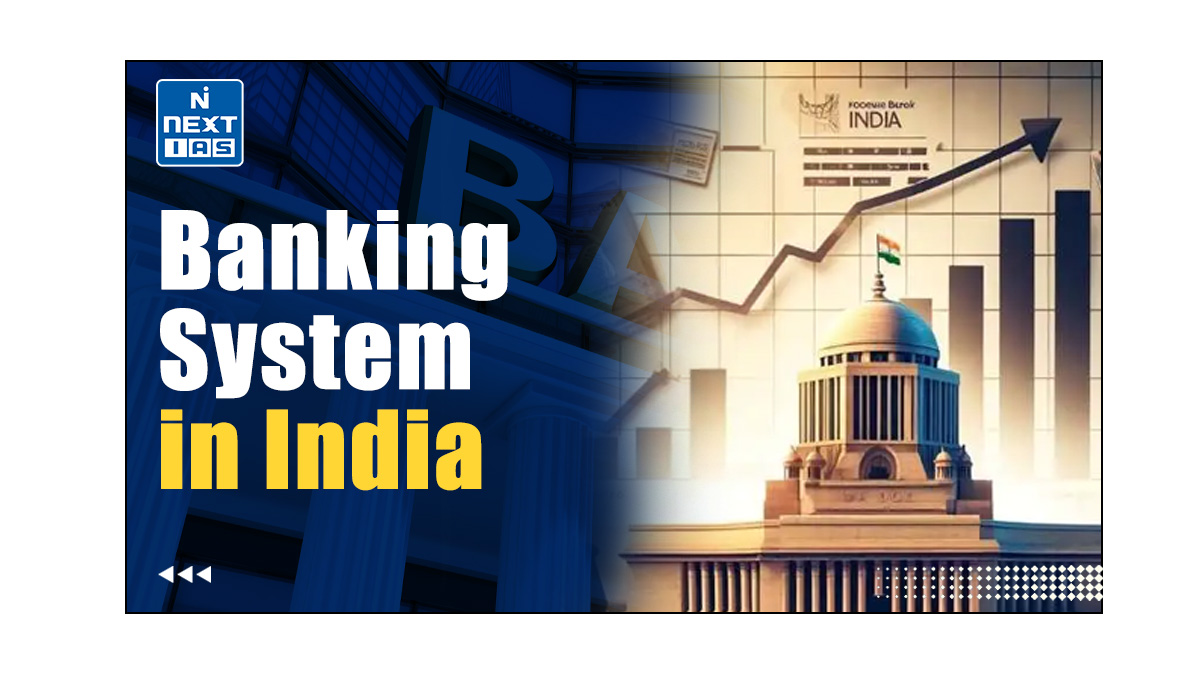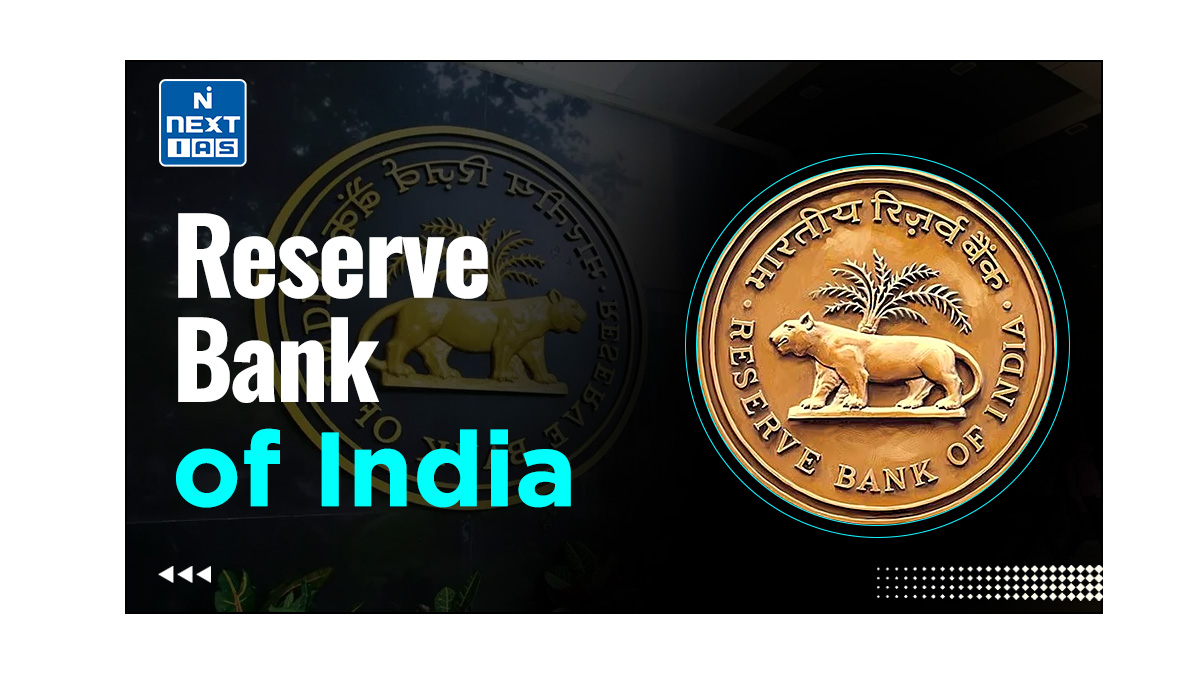
Privatisation of Public Sector Banks (PSBs) in India has been in consideration as a potential solution to enhancing efficiency in the Indian Banking System. Though it seems to offer certain benefits, it is not devoid of disadvantages. This article aims to study in detail the concept of Privatisation of Public Sector Banks (PSBs) in India, its meaning, rationale, needs, advantages, disadvantages and other related concepts.
Meaning of Privatisation of Public Sector Banks (PSBs)
- Privatisation of Public Sector Banks (PSBs) simply means less active and direct participation of the Central Government in the day-to-day activities of the Public Sector Banks (PSBs).
- In effect, the majority stake held by the Central Government in the PSB will be offloaded in favour of private investors.
- For banks, it means more competition in the market and less to negligible financial dependence on government funds.
Arguments in Favour of Privatisation of PSBs
Proponents favour the Privatisation of Public Sector Banks (PSBs) due to the following benefits:
- Improve the Overall Efficiency of Banking Sector: The Public Sector Banks (PSBs) are considered less efficient vis-a-vis the New Private Banks (NPBs). This is resulting into loss of taxpayers’ money.
- Increased Competition Leading to Development of Large-sized Banks: India’s banking sector is disproportionately under-developed given the size of its economy.
- Government’s Monopoly: The government ownership in the Public Sector Banks (PSBs) account for almost 70 percent of the banking assets. This has led to a kind of virtual monopoly and hence reduced competition, and inefficiency.
- Previous Experience: The strategic disinvestment has led to an increase in overall efficiency gains, which later translated into higher returns for the shareholders. Possibility of leveraging MFIs and NPBs for Social causes such as DBT, MGNREGA Wages, Pradhan Mantri Jan Dhan Yojana, etc.
- Reduced Burden on Public Exchequer: Reduce the burden on the Government by doing away with the need for undertaking their recapitalisation to comply with the higher BASEL III requirements.
- No Significant Outcome of Nationalisation of Banks: The Nationalisation of Banks has not yielded the desired results as was envisaged. The same is illustrated below.
| Benefits Sought That Were Materialised | On Ground Reality |
|---|---|
| Allocations of banking resources to rural areas, agriculture, and priority sectors and hence responsible for poverty alleviation between 1969-1991. | Poverty alleviation not entirely due to nationalisation of Banks; other factors such as Green Revolution, launch of poverty alleviation programmes such as IRDP contributed to Poverty alleviation. |
| Expansion of Banking Sector: Ten-fold Increase in the number of Rural Banks between 1969 and1980, leading to development of banking services and saving habits. | Proactive policies by the RBI to improve Financial Inclusion including Priority Lending and RBI’s 4:1 formula where a bank was required to open 4 rural branches to obtain a license to open an urban branch between years 1977 and 1991 etc. |
| Four-fold increase in Agricultural credit post Nationalisation. | Despite nationalization a significant portion of the poor remained unbanked till 2014. Financial inclusion received the necessary impetus in 2014 through the Pradhan Mantri Jan Dhan Yojana (PMJDY). This improvement was on account of active involvement of both PSBs and NPBs. |
Arguments Against Privatisation of PSBs
Some critics put forward the following arguments against Privatisation of Public Sector Banks (PSBs):
- Critics argue that the main reason for the lower efficiency of the Public Sector Banks (PSBs) is mainly the Government’s political intervention in the functioning of the PSBs.
- This interference leads to a lack of autonomy and freedom for the PSBs. and thus hurting their revenues.
- So the way forward to improve the efficiency of the PSBs is not privatisation, rather a complete overhaul of the Governance framework.
- Privatisation of public sector banks (PSBs) may not solve the problems.
- Even all the New Private Banks (NPBs) are not efficient and the balance sheets of the existing NPBs are as poor as the PSBs. For example, Yes Bank Crisis.
- The number of banking frauds of much higher value has occurred even in the NPBs as well.
- So, it is not the ownership structure that determines the efficiency levels of the Public Sector Banks (PSBs). Rather, it is the quality of Governance framework and effective regulation that can help promote the efficiency of the PSBs.
- There are many external constraints on the PSBs that lead to their poor efficiency.
- Some of the external constraints faced by the PSBs have been listed below.
Constraints Faced by PSBs in India
- Dual Regulation: While the PSBs come under dual regulation of the RBI as well as the Union Ministry of Finance, the Private sector banks are free from such dual regulation.
- Board Constitution: The appointment to the Boards of the Banks is mainly based on political considerations without giving due-emphasis on merit.
- Average tenures of Executive Director and Chairmen are shor, resulting into the weak empowerment of boards.
- External Vigilance: External vigilance enforcement through the CVC and CBI inhibits the PSBs from taking commercial risks that are otherwise deemed acceptable.
- Excessive Focus on Rules: There is a higher focus on adherence to procedures and rules rather than outcomes leading to red-tapism and slow decision-making.
Conclusion
The Privatisation of Public Sector Banks (PSBs) in India appears to be a crucial step towards creating a more dynamic and resilient banking sector. While it promises several benefits, it also presents challenges that need to be addressed thoughtfully. Balancing the profit motives of privatized entities with the social objectives of financial inclusion will be key to ensuring that privatisation of Public Sector Banks (PSBs) delivers inclusive and sustainable growth.
GS - 3





